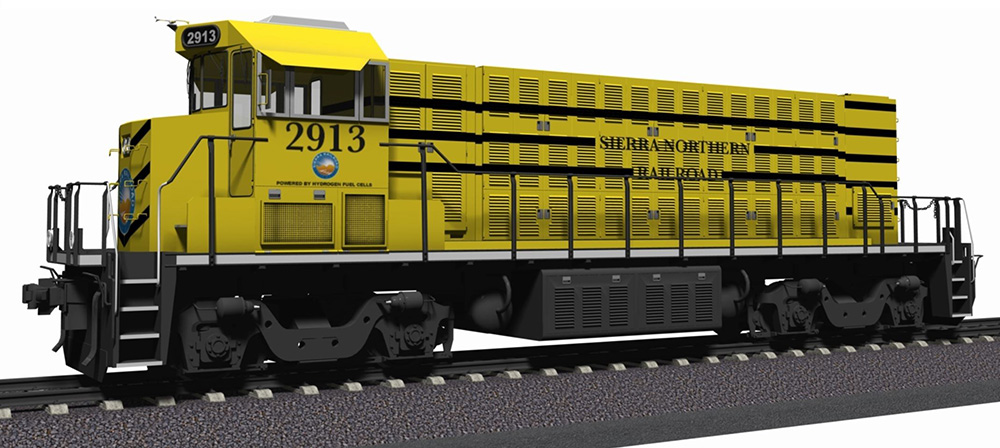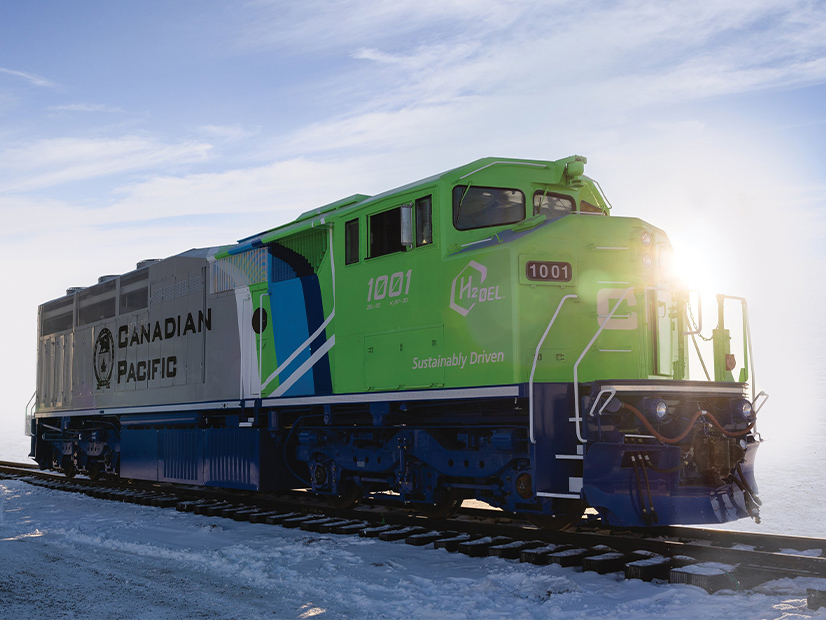The California Air Resources Board plans to vote Thursday on a regulation requiring new passenger and short-distance switch locomotives to be zero-emission starting in 2030 and new freight locomotives to be zero-emission starting in 2035.
The proposal is meant to reduce emissions. Diesel-powered locomotives emit greenhouse gases, oxides of nitrogen (NOx) and fine particulate matter, with train tracks running through many densely populated areas of the state.
“Exposure to toxic and harmful diesel emissions is known to lead to cancer and increases in asthma, cardiopulmonary illness, hospitalizations and premature mortality,” CARB says on its website. “Communities near rail operations bear a disproportionate health burden due to their proximity to harmful emissions.”
Trains have generally been regarded as a cleaner form of transportation than big rigs, producing fewer emissions per ton of cargo carried. But a CARB analysis shows that as trucks decarbonize, trains will become the bigger polluters.
California’s current emissions limits will make trucks the cleaner mode of freight transportation starting as soon as this year, CARB says. Regulations to be implemented beginning in 2024 will gradually increase the differences between truck and train emissions until trucks are 100% zero-emitting and trains are not, CARB says.
“Results show that as California’s current truck regulations are implemented through 2023, trucks are producing less particulate matter (PM2.5) and [NOx] emissions,” the board’s website says. “By 2023, trucks will be the cleaner mode to transport freight. Beyond 2023, future CARB regulations will further reduce truck emissions, eventually bringing them to zero.”
The state’s Advanced Clean Trucks regulation, adopted by CARB in June 2020, will require truck manufacturers to sell an increasing percentage of zero-emission medium- and heavy-duty trucks in the state from 2024 through 2035.
The U.S. Environmental Protection Agency approved a Clean Air Act waiver for the rules on March 31, clearing the way for the state to launch the zero-emission program starting with model year 2024. (See Groundbreaking California Clean Truck Rules Win EPA Waiver.)
CARB adopted its Advanced Clean Cars II regulation in August, requiring all new cars sold in the state to be zero-emission or plug-in hybrid by 2035. (The EPA restored California’s long-held waiver for passenger vehicles in March 2022, after the Trump Administration revoked it in 2019.) So far, 17 states have adopted California’s clean car rules.
In-use Locomotive Regulation
CARB is tackling locomotive emissions by proposing similar rules. Its “in-use locomotive” regulation would phase out diesel trains and replace them with zero-emitting locomotives over time.
The regulation would require locomotive operators to begin funding their own trust accounts based on emissions starting in 2024.
“The dirtier the locomotive, the more funds must be set aside,” CARB’s website says.
The funds could be used to buy or rent the cleanest “tier” of diesel locomotives through 2030. They could also be used to purchase or lease zero-emissions (ZE) locomotives, to fund ZE locomotive pilot and demonstration projects, and to pay for ZE locomotive infrastructure.

Under the proposed regulation, locomotives older than 23 years would be prohibited from operating in-state starting in 2030. “Switchers,” short-haul locomotives used to move train cars, and passenger locomotives with original build dates of 2030 and beyond would be required to “operate in a ZE configuration,” CARB says. More powerful “line-haul” locomotives would have to be zero-emitting if built after 2034.
Where the locomotives will come from remains in question. Only a handful of hydrogen fuel-cell and battery-powered trains are in experimental or development phases in the U.S. and Canada.
Canadian Pacific Railway made test runs of North America’s first hydrogen-powered locomotive last year and is seeking to have two more on the tracks by the end of 2023. (The railroad’s name changed to CPKC on April 14, when it merged with Kansas City Southern.)
The railroad intends to produce its own hydrogen at two railyards in Calgary and Edmonton, including using solar panels to power an electrolysis plant in Calgary that makes hydrogen from water.
In March 2021, the California Energy Commission awarded Sierra Northern Railway $4 million to develop a hydrogen fuel-cell switcher locomotive for use in West Sacramento, California, where it now operates an older high-polluting diesel engine. That project remains in development.


